Dryas octopetala
1: What defines "abrupt" climate change?
There are essentially two definitions of abrupt climate change:
(National Research Council, 2002)
These definitions are complementary: the former gives some insight into how abrupt climate change comes about ; the latter explains why there is so much research devoted to it, why it inspires catastrophe movies, and may even be the reason why you are reading this page.
2: What scientific evidence do we have that abrupt climate change has happened before?
|
Dryas octopetala |
Let us look at the temperature over Greenland for the last 18,000 years:
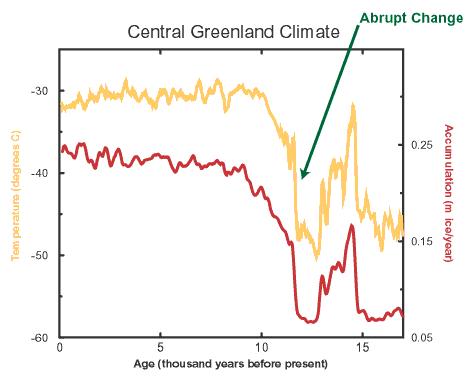
Figure 1: The Younger Dryas event as an example of abrupt climate change. Source: Abrupt Climate Change; Inevitable Surprises
Around 15,000 years ago, the Earth started warming abruptly after ~ 100,000 years of an "ice age"; this is known as a glacial termination. The large ice sheets, which covered significant parts of North America and Europe, began melting as a result. A climatic optimum known as the "Bölling-Allerød" was reached shortly thereafter, around 14,700 before present. However, starting at about 12,800 BP, the Earth returned very quickly into near glacial conditions (i.e. cold, dry and windy), and stayed there for about 1,200 years: this is known as the Younger Dryas (YD), since it is the most recent interval where a plant characteristic of cold climates, Dryas Octopetala, was found in Scandinavia.
The most spectacular aspect of the YD is that it ended extremely abruptly (around 11,600 years ago), and although the date cannot be known exactly, it is estimated from the annually-banded Greenland ice-core that the annual-mean temperature increased by as much as 10°C in 10 years.
This is a touchy subject that is currently the focus of much research. One explanation is the one involving a thermohaline circulation (THC) shutdown, triggered by a catastrophic discharge of freshwater from Lake Agassiz (figure 2). The consequence is a rapid reduction in northward ocean heat transports, leading to an abrupt cooling over Northern Europe and North America. That is why so much attention is focused on the behavior of the North Atlantic ocean circulation: not only by scientists, but also Hollywood screenplay writers. Bear in mind, however, that the greenhouse world we are creating through fossil fuel burning might not behave at all like the Earth of 12,800 years ago, so that this scenario may be irrelevant for future climate change.
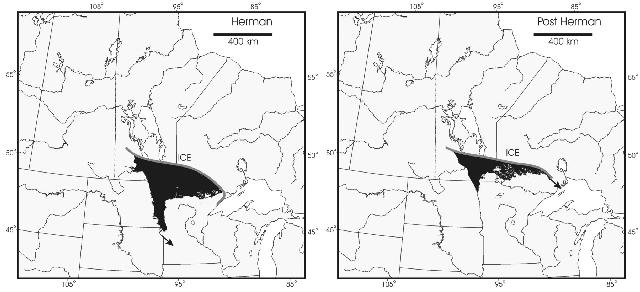
Figure 2: (Left) The outline of Lake Agassiz just before the catastrophic flood. At that time its outlet was to the south into the Mississippi drainage. (Right) The outline after the opening of the eastward outlet. A volume of 9500 cubic kilometers of water was suddenly released to the northern Atlantic through the St. Lawrence Valley (Leverington et al. 2000). (Source: Broecker, 2003)
A problem with this hypothesis is the timing of meltwater pulses that are supposed to have triggered the THC shutdown: it was found that a second meltwater pulse, albeit slightly smaller than the first one, occurred at the end of the YD (Fairbanks, 1989): why didn't it also trigger a similar chain of consequences in the climate system?
An alternate explanation (Clement et al., 2001) invokes the abrupt cessation in the El Nino -Southern Oscillation in response to changes in the orbital parameters of the Earth, although how such a change would impact regions away from the Tropics remains to be explained.
The respective merits of both hypotheses have been laid out by Broecker (2003). The issue is far from being settled, and actively researched at Lamont and elsewhere.
There are many other examples of abrupt climate change in the last 50,000 years, which bear the rather cryptic names of Heinrich, and Dansgaard/Oeschger events. The picture below (figure 2) shows where Dansgaard/Oeschger (DO) events have been recorded. More details on those are provided on this link.
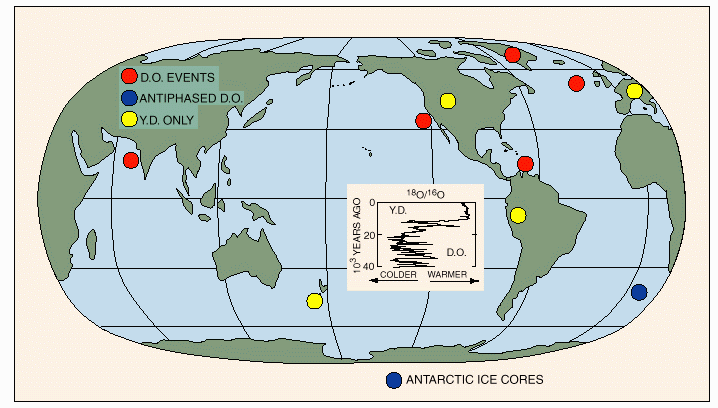
Figure 3: Locations of the main records of abrupt climate change in the last 40,000 years. The inserted curve is a proxy for the temperature of precipitated snow over Greenland. (Source: Wallace Broecker)
From this inserted panel, it is clear that the YD was a very strong event, yet it is also apparent that it was only the most recent of a series of large and abrupt climate swings that occurred repeatedly in the last ice age, and were recorded in many places around the globe, as attested by the number of red dots on the picture.
Although they are of considerable theoretical interest, all these oscillations (including the YD) occurred at a time when parts of the Northern Hemisphere continents were covered by ice sheets, and the subpolar oceans where covered by sea-ice in winter. This makes such cases less relevant for understanding what might happen to our greenhouse world as a result of human activities. A better analog would be the Late Paleocene Thermal Maximum (about 55 million years ago, when the Earth was very warm), but the information about this period is frustratingly sparse because it is so remote in time. Let us then switch to another, more recent, and socially dramatic example:
Under the rule of Sargon of Akkad, the first empire was established between about 4300 and 4200 calendar years before present (B.P). on the broad, flat alluvial plain between the Tigris and Euphrates Rivers (Weiss et al., 1993). Akkadian imperialization of the region linked the productive but remote rain-fed agricultural lands of northern Mesopotamia with the irrigation agriculture tracts of southern Mesopotamian cities. After about a hundred years of prosperity, however, the Akkadian empire collapsed abruptly at 4170 ± 150 calendar yr B.P. (Weiss et al., 1993; Postgate, 1992). Archaeological evidence documents widespread abandonment of the agricultural plains of northern Mesopotamia (Weiss et al., 1993) and dramatic influxes of refugees into southern Mesopotamia, where populations swelled (Weiss et al., 1993, Weiss, 2000). A 180-km-long wall, the "Repeller of the Amorites," was built across central Mesopotamia to stem nomadic incursions to the south. Resettlement of the northern plains by smaller, sedentary populations occurred near 3900 calendar yr B.P. , about 300 years after the collapse. The stratigraphic level representing the collapse at Tell Leilan, northeast Syria, is overlain by a meter-thick accumulation of wind-blown fine sediments, suggesting a sudden shift to more arid conditions. Social collapse evidently occurred despite archaeological evidence that the Akkadians had implemented grain storage and water regulation technologies to buffer themselves against the large interannual variations in rainfall that characterize this region (Weiss et al., 1993).
It has been recently proposed (Cullen et al. 2000) that the demise of this complex civilization is due to a prolonged period of drought starting at 4025 ±150 years). Paleoclimatic evidence is given in Figure 4.
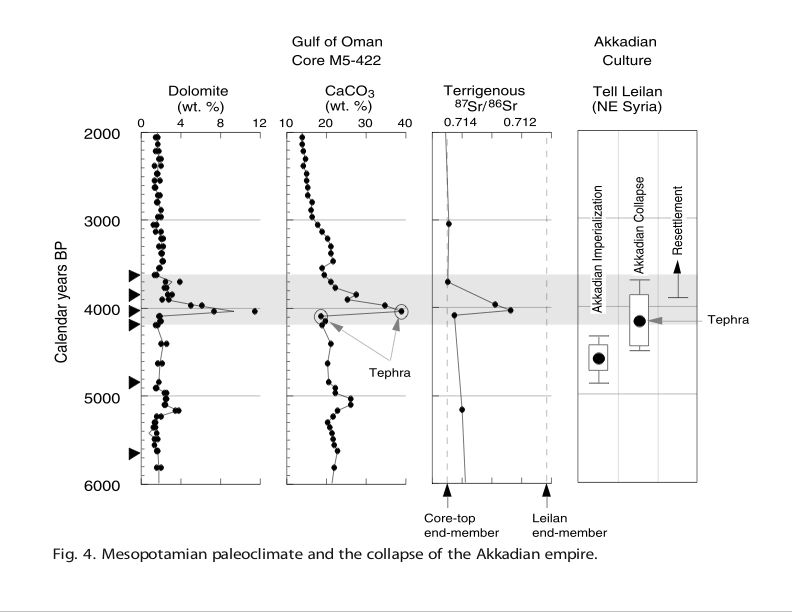
Figure 4: Late Holocene record of Mesopotamian aridity as reconstructed from the quantity of wind-borne sediment components in a deep-sea core retrieved in the Gulf of Oman. The shaded grey area highlights a period spike in wind-blown sediments in the core, dating by radiocarbon methods . For such a high quantity of terrestrial dust to have been uplifted from Mesopotamia and transported to the sea, it is inferred that a drought persisted for about 300 years. (Source: deMenocal, 2001)
Geochemical similarity of volcanic tephra shards found at Tell Leilan and in the deep-sea sediment core provided further evidence that the Akkadian collapse and climate change events were synchronous (Cullen et al, 2000). Enhanced regional aridity is also indicated by increased wind-blown quartz deposition in nearby Lake Van at the headwaters of the Tigris River (Lemcke and Sturm, 1997) and by paleoclimate records from the Levant (Bar-Matthews et al., 1997). The combined archaeological and paleoclimate evidence strongly implicates abrupt climate change as a key factor leading to the demise of this highly complex society.
The onset of sudden aridification in Mesopotamia near 4100
calendar yr B.P. coincided with a widespread cooling in the North Atlantic (Bond
et al., 1997; deMenocal et al., 2000). During this event,
termed Holocene Event 3 (Fig. 5, below), Atlantic subpolar
and subtropical surface waters cooled by 1° to 2°C.
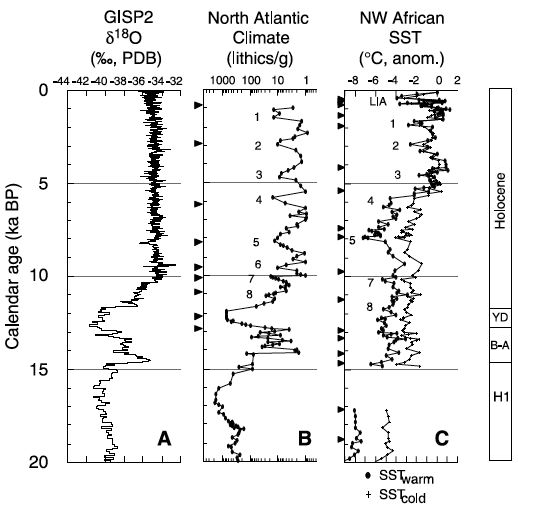
Figure 5: The 4100 drought put it the context of the last 20,000 years.
Panel A displays a proxy for the temperature of precipitation over Greenland. Panel B shows the fraction of lithic grains per gram in the northern North Atlantic, which is interpreted as a proxy for iceberg discharge there. Panel C shows a proxy for the sea-surface temperature (SST) off North West Africa. (Source: deMenocal, 2001)
The headwaters of the Tigris and Euphrates Rivers are fed by elevation-induced capture of winter Mediterranean rainfall. Analysis of the modern instrumental record shows that large (50%) year-to-year reductions in Mesopotamian water supply result when subpolar northwest Atlantic sea surface temperatures are anomalously cool (Cullen and deMenocal, 2000). The aridification of Mesopotamia near 4200 calendar yr B.P. may thus have been related to the onset of cooler sea surface temperatures in the North Atlantic, the ultimate cause of which has not yet been elucidated. Equally obscure is why similar coolings (1 and 2 in the curve above) did not trigger similar droughts.
The example of such a "mega-drought" and its dire consequences is particularly revealing of the vulnerability of complex societies to abrupt changes in our current climate, often believed to be much more stable than that of the "glacial world". From Panel A in figure 5, one would think that the last 11,000 years have been rather uneventful, and this is quite true in terms of temperature changes in Greenland. However, we see here that this did not preclude marked, regional changes in precipitation spanning entire decades, or even centuries in this case.
To further confirm the modern relevance of such abrupt climate change, we present below a map of the estimated extent of the Akkadian empire:
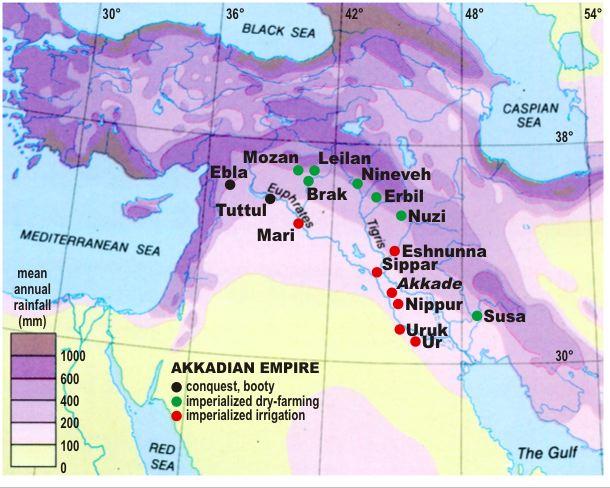
Figure 6: Map of the Akkadian empire (source: http://research.yale.edu/leilan/akkadian/)
A quick comparison to a map of the modern Middle East, reveals that were such a megadrought to occur today over former Mesopotamia, which is now a region of exquisite geopolitical sensitivity, it would still have profound human consequences on the region. Judging by the history of the last 3 years, it would also have global strategic consequences.
3: How reliable is the evidence/timeline for abrupt climate change?
|
As we have seen in question 2, the conclusion that abrupt climate changes have occurred in the past is almost impossible to avoid. Their timing, however, is rather difficult to pin down, due to the inherent imprecision of geochemical dating methods (decay of radioactive elements such as carbon 14 or uranium series). Nonetheless, the analysis of annually banded records (ice cores, corals, tree-rings, or speleothems) has firmly established the rapid rate of these changes. The ubiquitous character of certain events further confirms their importance: "the Younger Dryas and a large number of abrupt changes during the last ice age called Dansgaard/Oeschger events (23 abrupt changes into a climate of near-modern warmth and out again, during the last glacial period) have been corroborated in multiple ice cores from Greenland, Antarctica and tropical mountains, marine sediments from the North Atlantic Ocean, the tropical Atlantic, eastern Pacific, and Indian Oceans, and from various records on land. Other, smaller abrupt changes have been linked to societal disruptions. Evidence for some of these events are more regional in nature, and points to far less dramatic changes. However, these events did occur so rapidly and unexpectedly that human or natural systems had difficulty adapting to them - the second definition of abrupt climate change." (source: NOAA Facts Sheet) Thus, while we like to find evidence of large events in many distant locations, local changes can be instructive examples of abrupt climate change, if properly dated. |
|
| next Q&A | Photos, top to bottom: © H.D. Grissino-Mayer; Todd Sowers, LDEO; N. Naik, LDEO; N. Naik, LDEO |
4: Is there much scientific debate over the paleoclimatological records of abrupt climate change?
No one doubts that abrupt climate change has happened - the evidence for it is overwhelming - but there are considerable controversies as to where, how, why or even when it happened. The uncertainties bear on the following points:
Broecker, WS., Does the trigger for abrupt climate change reside in the oceans or in the atmosphere?, Science 300 (5625): 1519-1522 JUN 6 2003.
5: How can the paleoclimatological record be used to assess the potential for future abrupt climate change?
The value of paleoclimate data is twofold:
There is no reason to expect that, given the extraordinary quantity of greenhouse gases we are putting into the atmosphere, climate cycles of the past 900,000 years will nicely repeat themselves. In other words, paleoclimate data are of no use for forecasting the future in a statistical sense. Nonetheless, they carry a crucial message: the Earth's climate is susceptible to very rapid and large swings in response to rather modest forcings, or without much external forcing at all (i.e. it can act on its own). The Earth climate is an "angry beast". It is best not to poke it inconsiderately.
Forecasting climate change requires the use of sophisticated climate models (General Circulation Models, or GCMs). These are computer programs of tremendous complexity, with many bells and whistles. As a result, slightly different physical assumptions, slightly different computational techniques, or even the same code on different computers, will give rather different answers. That is one reason why the predictions of the Intergovernmental Panel on Climate Change (IPCC, 2001) are so scattered. We can only gain confidence in the physical validity of our models, hence in our predictions of future climate change, by confronting them with stringent tests provided by the paleoclimate record. It is critical that models focus on this task, and that more data be collected to test them.
6: Are there precursor signals that we could monitor now to indicate an imminent abrupt climate change?
Yes, but they are heavily dependent on the underlying theories of climate change. Since a proposed origin for abrupt climate change is a shutdown of the North Atlantic thermohaline circulation (THC), the latter is watched rather closely. This can be done by doing repeating cross-sections of the temperature and salinity fields at various latitudes in the North Atlantic, monitoring deepwater formation in the Nordic Seas, the deep western boundary current running south along the coast of the Americas, or following long-term variations in sea-level (Häkkinen and Rhines, 2004) and other proxies for the intensity of the THC such as chemical tracer distributions. Consistent with theoretical expectations, the most recent evidence points to a freshening of the northern North Atlantic as a result of greenhouse warming (Dickson et al, 2002), and a weakening of the thermohaline circulation (Hansen et al, 2001). However, this happens at a rate far too slow to be considered as "abrupt".
On the other hand, if you believe that abrupt climate change is driven from the Tropics, you will want to maintain a good knowledge of tropical surface and subsurface temperatures, currents and surface pressure. This is how the 76/77 "climate shift" was discovered, and this is what permits us to initialize forecasts of El Niño events on interannual and (hopefully) decadal timescales. A difficulty is that chaotic processes in the climate system may allow the cause of such abrupt climate changes to be undetectably small (NAS Report, 2002)
On the whole, this highlights the importance of maintaining and developing an increasingly accurate and extensive coverage of the Earth's important climate variables. Satellite programs have brought substantial progress on this, but they must be complemented by long-term in situ measurements, such as those developed by Lamont scientists.
Dickson B, Yashayaev I, Meincke J, Turrell B, Dye S, Holfort J, Rapid freshening of the deep North Atlantic Ocean over the past four decades, Nature 416 (6883): 832-837 APR 25 2002
Häkkinen S, Rhines PB, Decline of subpolar North Atlantic circulation during the 1990s, Science 304 (5670): 555-559 APR 23 2004
Hansen, B., W. Turrell, and S. Østerhus. "Decreasing Overflow from the Nordic Seas into the Atlantic Ocean Through the Faroe Bank Channel Since 1950," in Nature, Vol. 411, June 21, 2001.
7a: What causes abrupt climate change?
It is widely recognized that abrupt climate change is a rapid transition between climate states. There are at least three well-supported hypotheses for the causes of such a jump :
1) A sudden change in parameters or forcing that are external to the
system.
From the point of view of the ocean, the sudden release of freshwater
from a glacial lake is an external forcing, capable of rapidly modifying the
surface circulation in the North Atlantic, and the climate of adjacent regions.A
volcanic eruption or a massive nuclear war would also fall into this category.
2) Slow changes in an external forcing can move the climate system across a threshold
For example, the oscillation between glacial and warm conditions results from periodic (hence predictable) changes in the Earth's orbit around the sun. These changes influence the seasonal distribution of solar radiation and can potentially cause abrupt changes in El Niño, monsoons and the global atmospheric circulation.
The abrupt shifts, scientists hypothesize, result from crossing thresholds, such as when ice melting rapidly freshens the North Atlantic sea surface, shutting down the ocean thermohaline circulation.
3) Internal, perhaps chaotic, changes in the climate system itself generate
rapid change, when they cause the climate system to cross a threshold. For example
internal variability in tropical ocean-atmosphere dynamics (El
Niño) may engender changes with regional to global consequences.
Regardless of their origin, abrupt forcing, smooth forcing or no forcing at all, a fundamental concept to understanding of abrupt climate change is the notion of nonlinearities and multiple equilibria (National Research Council 2002).
Click here for more information on the non-linear dynamics of climate
7b: Could it happen as a result of greenhouse warming?
Certainly not as described in certain catastrophe movies (Weaver and Hillaire-Marcel, 2004). The premise, however, is not entirely wrong. Most models do predict that the thermohaline circulation will slowdown in the 21st century as a result of greenhouse warming. This is shown below for the bundle of models used for IPCC simulations. The slowdown occurs because of the addition of freshwater to the North Atlantic Ocean making it less dense and less able to sink to depth.
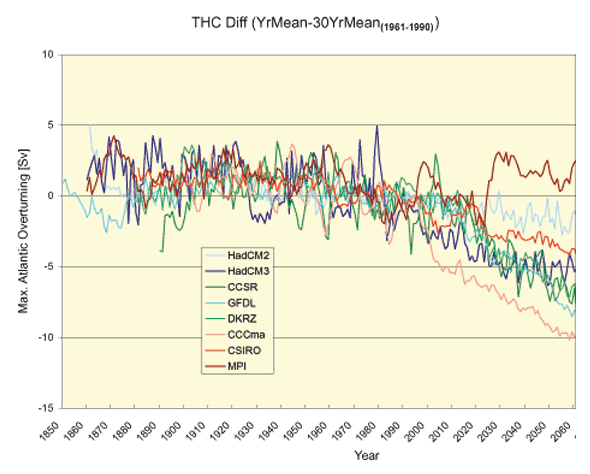
Figure 9.25: Simulated water-volume transport change of the Atlantic "conveyor belt" (Atlantic overturning) in a range of global warming scenarios computed by different climate research centres. Shown is the annual mean relative to the mean of the years (1961-1990) [unit: Sv, 10^6 m^3.s^-1].(Source: IPCC, 2001, chapter 9, p105)
The thermohaline circulation contributes to a warmer Northern Hemisphere by transfering heat from the tropics to the subpolar regions. However, the details of this are often misrepresented and exaggerated. A striking feature of winter climates around the North Atlantic is how warm it is in the British Isles and northwest Europe compared to the bitter cold at the same latitudes on the other side in North America (Labrador, Newfoundland and so on). Winter mean temperature differences in these places can be as much as 20 degrees Centigrade.
Research has now shown that this temperature difference is primarily explained by two processes: 1) the release in winter of heat stored in the ocean during the previous summer and 2) the prevailing direction of the winds which are themselves influenced by the Rocky Mountains. Because of the requirement for angular momentum conservation, as the winds blow from west to east, the Rockies force them to take a deep dip to the south after crossing the range. The return flow towards the north occurs downstream - over western Europe. Thus, not only does Europe receive mild air from the west warmed by winter heat release from the North Atlantic Ocean but it also gets air blowing up from the south where it is warm. In contrast, eastern North America not only gets cold air coming off a frigid continental interior to its west but it also gets its air from the north where it is really cold!
These two processes - seasonal heat storage by the oceans and the pattern of the prevailing winds - explain the huge wintertime temperature difference between western Europe and eastern North America. (A similarly large temperature difference occurs across the North Pacific ocean). The transport of heat by the ocean currents actually warms both sides of the North Atlantic Ocean because this heat is released to the atmosphere preferentially in two places: in the Gulf Stream immediately east of North America where storm systems blow it into America, and between Scotland and Norway where it causes extensive warming that keeps the coast of Norway north of Bergen ice free in winter.
At the latitudes of London or Paris, or in eastern North America, the best estimates (based on computer models) are that a complete shutdown of the ocean circulation, or just the thermohaline part, would cause cooling by about 2-4 degrees Centigrade. This would leave a huge difference in winter temperatures between western Europe and eastern North America but would be a rude surprise to Europeans accustomed to mild, damp and dreary winters. The cooling would be much more in Norway as sea ice extends south down the coast.
However the ocean circulation cannot stop entirely. The circulation is driven in large part by the winds and these will continue to blow under any climate scenario we know of or can imagine for the future. So, even if freshening of the North Atlantic Ocean causes reduced sinking, the wind-driven circulation will continue to bring warm waters up from the subtropics, warming eastern North America in the process, and across the North Atlantic to ameliorate the climate in parts of western Europe. Exactly how much cooler and if and when this might happen is subject to ongoing debate.
So far climate models show a rather gradual slowdown of the thermohaline circulation in the Twenty First century and this means that while western Europe warms less than some other high latitude areas it still warms. However we do not know whether these same models are capable of producing abrupt climate changes and we do not know if they model the details of the thermohaline circualtion correctly. One way to test them would be to see if they can reproduce documented past abrupt changes. Despite these model simulations of the coming century there is still reason to be concerned about what will happen to the real North Atlantic Ocean circulation. A slowdown of the thermohaline circulation alone would cause obvious climate changes and the probability of this occurring and the changes it would cause need to be accurately determined.
Two things, however, are rather clear:
If there is one thing you should be worried about, it is more extreme precipitation variability (droughts and floods) rather than the onset of another ice age. (see question 8).
Häkkinen S, Rhines PB, Decline of subpolar North Atlantic circulation during the 1990s, Science 304 (5670): 555-559 APR 23 2004
Weaver AJ, Hillaire-Marcel C, Global warming and the next ice age, Science, 304 (5669): 400-402 APR 16 2004
8: Is there a "mild" or less severe form that abrupt climate change can take?
Most probably. It is, in truth, highly unlikely that a new ice age will happen as a result of greenhouse warming (Weaver and Hillaire-Marcel, 2004). It has been observed that the thermohaline circulation has been slowing down rather smoothly in the last decade (Hansen et al 2001). It could simply continue to do so.
On the contrary, it is expected (and sometimes even observed) that as a response to human-induced warming, quite abrupt changes will occur not on a global, but on a regional scale: one example is the drying of the Sahel in the seventies, and persistent drought since, which is perhaps one step on the path to the future climate.
Another example is the 76/77 "Climate Shift" that originated in the tropical Pacific but had significant impacts on North American climate and fisheries.
A relevant question is not whether but when, in your area of interest, an abrupt change in precipitation and water availability will ensue with a few decades. This is very difficult to forecast, and climate modelers are currently working seriously on this issue.
Hansen, B., W. Turrell, and S. Østerhus. "Decreasing Overflow from the Nordic Seas into the Atlantic Ocean Through the Faroe Bank Channel Since 1950," in Nature, Vol. 411, June 21, 2001
Weaver AJ, Hillaire-Marcel C, Global warming and the next ice age, Science, 304 (5669): 400-402 APR 16 2004
9: What is Lamont's role in abrupt climate change research?
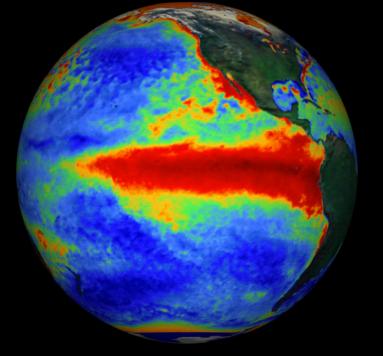 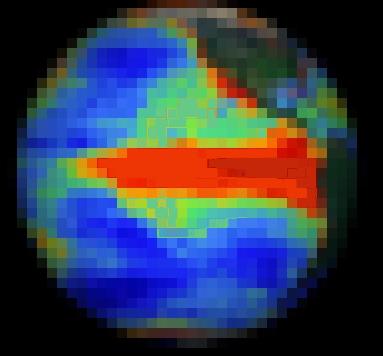
|
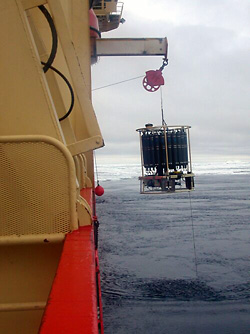
|
|